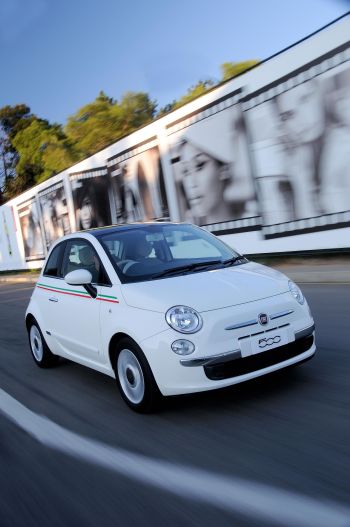 |
|
Fiat Group suffered a difficult month for
sales across Europe in March with a total
120,054 vehicles sold, a year-on-year
decline of 12.1 pct, which followed the
trend as the overall new vehicle market
suffered a sharp decline. |
|
|
|
Fiat Group
suffered a difficult month for sales across Europe (all
EU + EFTA) during March with 120,054 vehicles sold
(136,543 in March 2007), a year-on-year decline of
12.1%, which came as the overall market for new vehicles
suffered a sharp decline; Fiat's total European market
share slipped from 7.5 to 7.3% year-on-year.
Splitting up the
brands, Fiat (100,825), including the Fiat Professional and
Abarth units, was down 4.6 pct; Lancia (10,609) meanwhile
lost 23.3% while Alfa Romeo (7,820) was busy engaged getting
production at its main factory back on track after the
facility's temporary closure and was down 52.3%. The Fiat
brand took a 6.1% share of the European market last month,
Lancia ended with 0.6% and Alfa Romeo claimed 0.5%.
After the first
quarter of 2008, Fiat Group accounts for 337,091 unit
registrations across Europe (counting all EU + EFTA member
states) compared to 351,704 units during the same period
last year, a decline of 4.2%. The Fiat brand is on 280,556
for the first quarter, a rise of 4%, while Lancia (32,481)
and Alfa Romeo (22,028), are down 13.8 and 48.6%
respectively.
New passenger
car registrations across Europe fell by 9.5% in March,
bringing the quarterly figure down to -1.7% compared with
registrations in the first three months of last year. In a
context of economic uncertainty generated by the US
financial crisis, car sales in Western Europe were affected
most by the decline, with monthly registrations dropping by
10.2%, whereas the new Member States still posted growth in
March (+3.5%) and the first quarter (+14.7%). The March
results were also negatively influenced by the holiday of
Easter being celebrated early this year: in most countries,
the Easter holiday led to two less processing days compared
to 2007. In total, over 1,650,000 new cars were registered.
Registrations in
Western Europe dropped by 10.2% in March compared to
the same month last year. Only the UK and Portugal saw new
car demand rise by 0.5% and 5.2% respectively. The British
market improved compared to January and February, remaining
stable in the first quarter (-0.7%), although forecasts for
GDP growth this year suggest a significant softening. The
German market, despite a 14.4% decrease in March (partly due
to a distortion in the February and March 2007 figures
(3)), proved robust with a 2.6% upturn three months into
the year. Overall, more than half of the Western European
countries ended the quarter on a positive note. The French
market resumed an upward trend commenced last summer (+1.3%)
after a weak January when green tax measures entered into
force. The situation in Spain, however, has become less
buoyant with the withdrawal of the so-called Prever
scrapping incentives on January 1, 2008. Demand declined by
15.3% over the first quarter and by 28.2% in March. The
month was also difficult for the Italian market, which
registered 18.8% fewer new cars, and 10% less for the whole
quarter. Weak consumer confidence
(4), which stood at its lowest in four years, the
pre-elections climate and the overall economic setting
contributed to the fall in Italy.
The markets in
the
new
EU Member States remained on a growth path, with
eight countries out of ten posting an increase over the
first quarter of 2008. Poland registered the most new cars
during that period (86,926 units or a 19.5% increase). Among
the four biggest markets, Romania recorded the largest
growth (+23.6% or 74,028 units). Hungary registered 42,559
new cars (+3.5%), and the Czech Republic 33,026 (+9.7%).
|